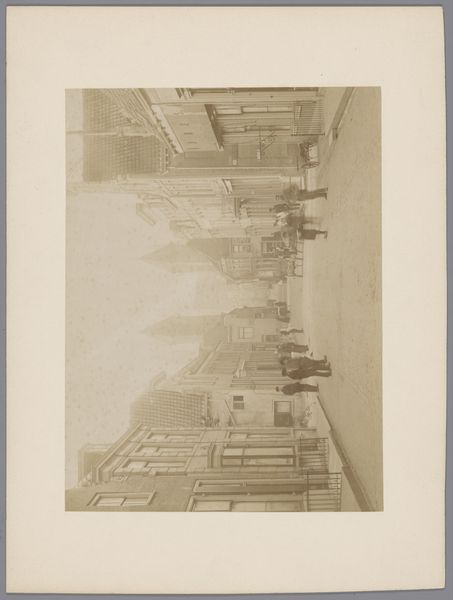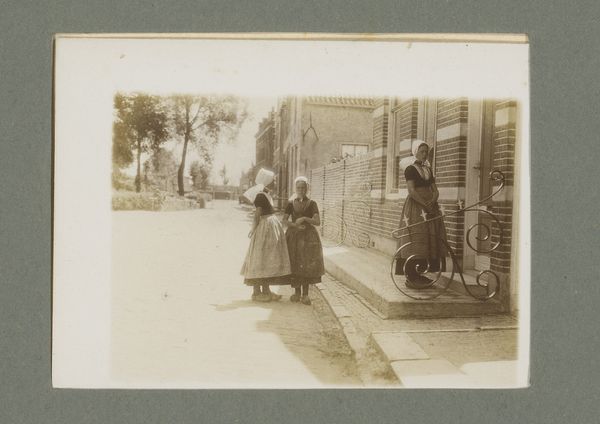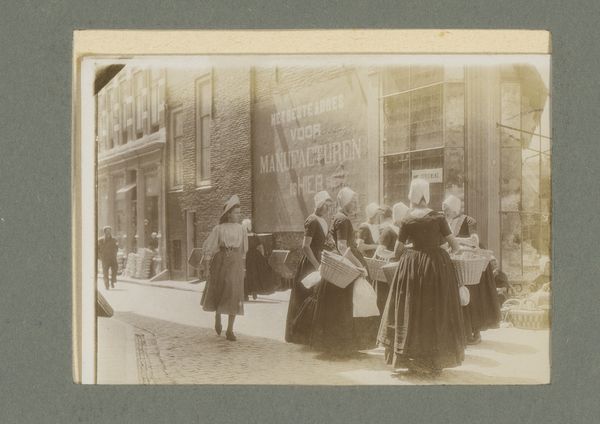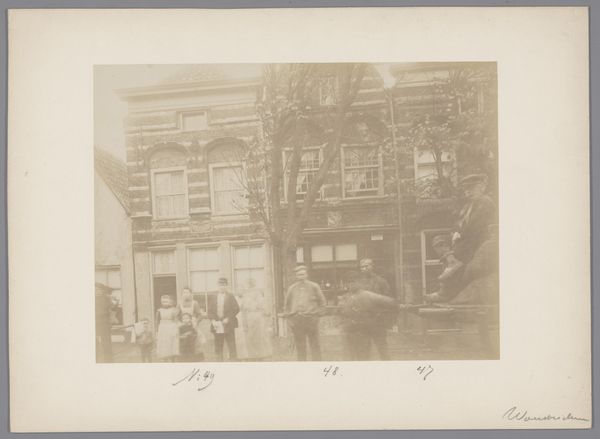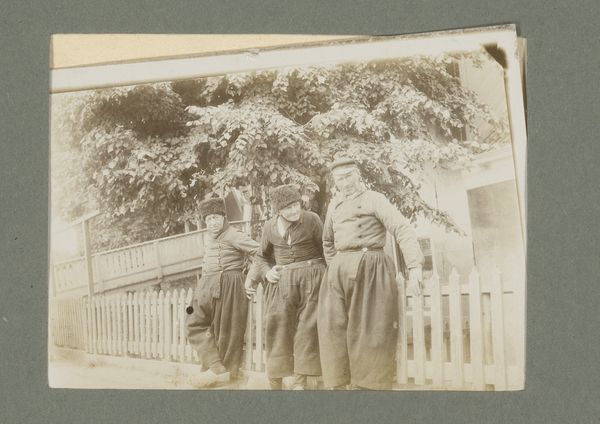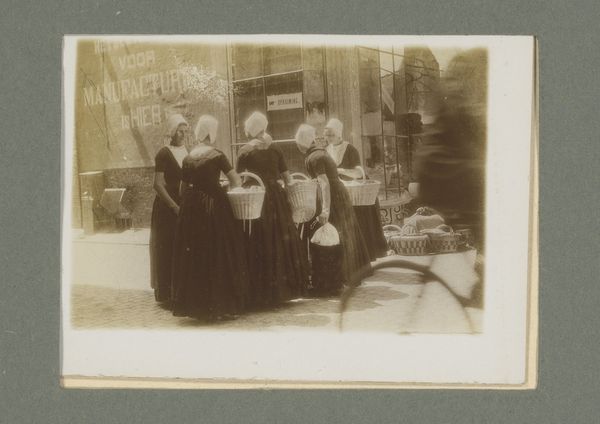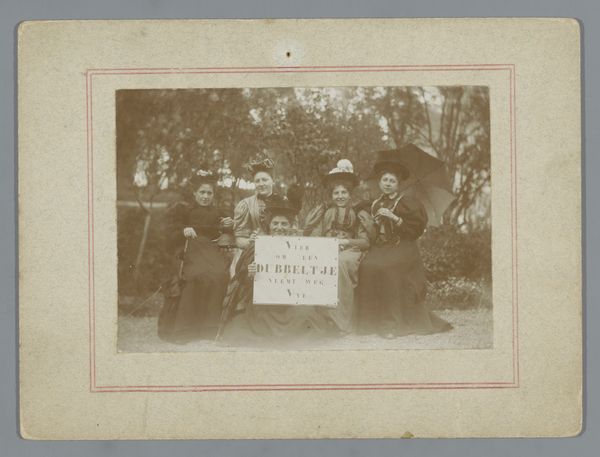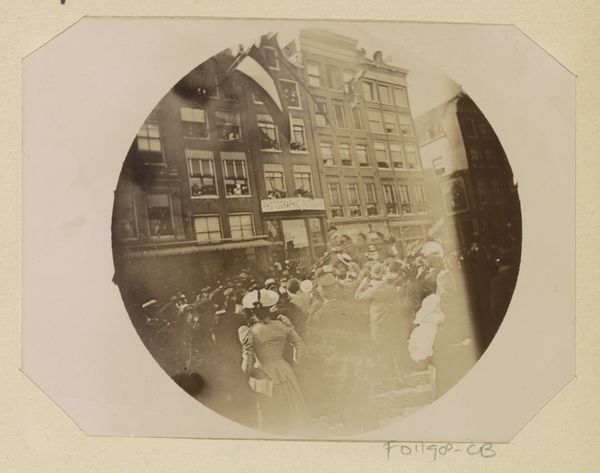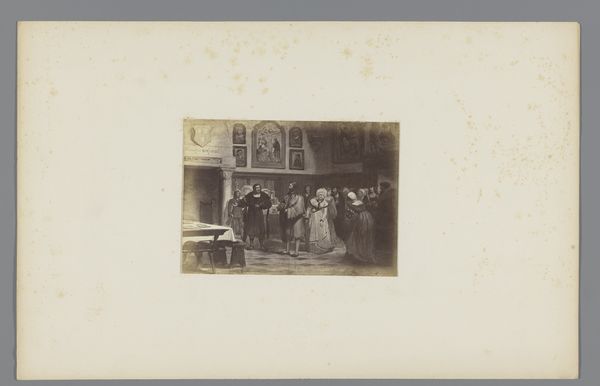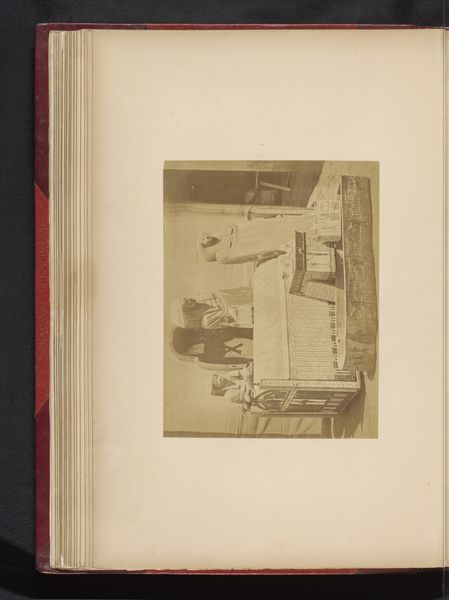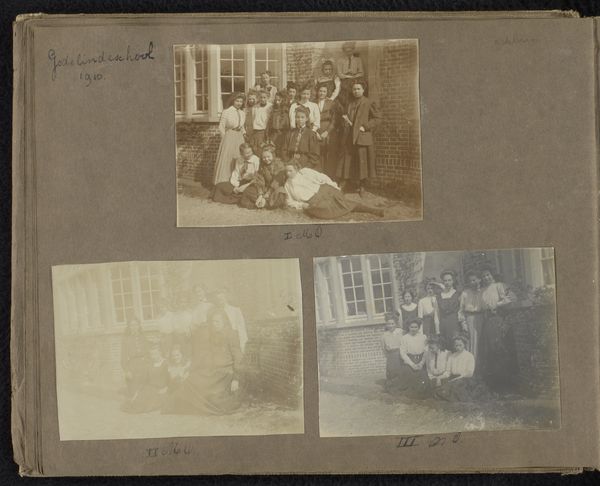
photography
#
portrait
#
pictorialism
#
street-photography
#
photography
#
cityscape
#
street
Dimensions: height 105 mm, width 76 mm
Copyright: Rijks Museum: Open Domain
Editor: Here we have a photograph titled "Twee vrouwen op straat in Den Haag," which translates to "Two Women on the Street in The Hague." It was taken before 1894 by Hendrik Herman van den Berg. The figures, though slightly blurred, are captivating; I find myself drawn to the bustling energy and feeling like a quiet observer, even with this aged photo quality. How do you interpret this work within its historical context? Curator: Well, this piece allows us a fascinating glimpse into the public sphere and its performance during the late 19th century. The women are walking from a passenger carriage, quite stylish, but consider what isn’t visible: their class status is telegraphed by their clothing but also limited by public expectations, the streets become both liberating and constricting at once. Editor: So, would their attire carry social or even political messages beyond just signaling wealth? Curator: Precisely. Think of what this seemingly candid photograph actually signifies. The very act of women appearing unescorted, engaging in public life outside of traditionally prescribed roles –shopping, maybe? visiting someone? – this presents a complex negotiation of their status. Further contextual understanding would be needed about laws related to property ownership for women at the time, or access to education that allowed women to operate independently without male kin to be better interpretd. How does the composition strike you? Editor: It's interesting. The women aren’t centered; the background sign and building compete for attention. It creates this tension between the subjects and their environment. Curator: Yes, it is through analyzing these images can become evidence of changing norms. Before wide use of amateur photography and easier media like the Brownie camera by Kodak which came about later in the late 1890s, images had much different importance and significance than do "snapshots" that we view on social media today! I appreciate how it opens this space for the consideration of gendered space within an historical setting. Editor: I had not considered photography being so "precious", because of the difficulties behind producing photographs prior the popularisation of photographic materials. Curator: Exactly, and that's why engaging with socio-historical perspectives enriches our understanding of its many-layered meaning.
Comments
No comments
Be the first to comment and join the conversation on the ultimate creative platform.
